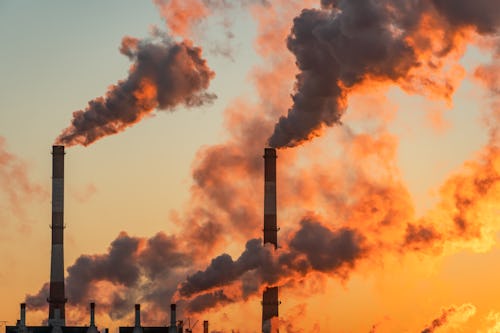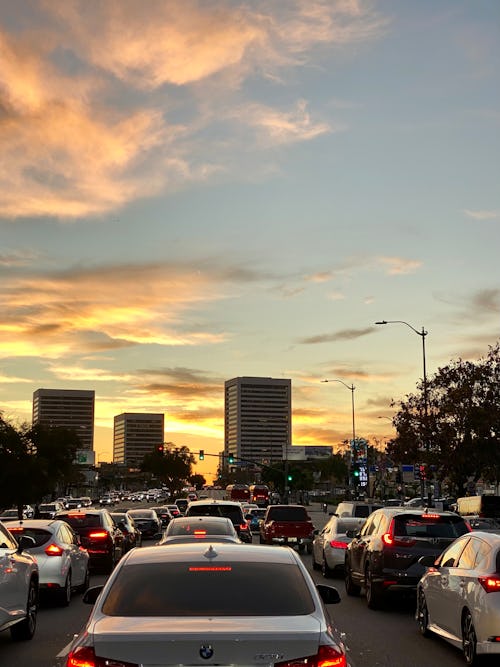
Social movements can’t rely on a single tactic to be successful. You have to use every tool at your disposal — walks-outs, protests, social media campaigns. Recently, climate movements have turned to litigation as a potentially powerful tool too.
In the United States, the courts have had a questionable role in social movements. Living in the post-Roe era, we’re intimately familiar with how the courts can fail us. At the same time, litigation can lead to big successes. That much was seen with Roe v. Wade when it was originally ruled, as well as landmark cases like Brown v. Board of Education and Loving v. Virginia.
Climate litigation isn’t new. As Paul Sabin, a professor of environmental history at Yale, told Vox, “Litigation has been a crucial strategy for environmental activism since the ‘60s and the ‘70s.” As the crisis worsens, though, climate cases have increased. Last year, Reuters reported that data from Columbia Law School’s Sabin Center for Climate Change Law showed 1,375 climate-related lawsuits were filed in U.S. courts, compared to around 425 in other countries.
These lawsuits don’t always end in wins. But winning isn’t necessarily the point. Sure, it’s great to have the courts — or even a jury — rule in your favor. But sometimes, lawsuits are just meant to get attention and start agitating people. Here are five climate lawsuits that have shaped the movement as it stands today.
City of Los Angeles v. National Highway Traffic Safety Administration

In 1986, the city of Los Angeles, alongside environmental organizers, sued the National Highway Traffic Safety Administration over fuel efficiency standards for new cars. The lawsuit stated that lowering these standards would worsen global warming.
When creating new standards, the NHTSA didn’t prepare an environmental impact statement. Under the National Environmental Policy Act, an EIS is required to assess actions “significantly affecting the quality of the human environment.”
Ralph Cavanagh, an attorney with the Natural Resources Defense Council working on the case, warned there would be “catastrophic climate changes” in upcoming decades “unless significant reductions in fossil fuel consumption can be achieved, including those potentially associated with improved fuel efficient standards.”
This was one of the first cases that attempted to address harms caused by greenhouse gas emissions. Unfortunately, an appeals court ruled in favor of the federal government. Today though, California still has strong environmental laws for cars, including requirements for vehicles made after 1976 to participate in biannual smog checks.
Massachusetts v. EPA
In 1999, Massachusetts, alongside 11 other states, petitioned the Environmental Protection Agency to regulate carbon dioxide as an air pollutant.
Under the Clean Air Act, the EPA has to regulate air pollutants that “may reasonably be anticipated to endangered public health or welfare.” Petitioners argued that carbon dioxide met this standard.
In 2003, the EPA denied the petition. Per Ballotpedia, the EPA claimed it didn’t have the legal authority to regulate carbon dioxide and similar gases as air pollutants. Furthermore, doing so would have run afoul of then-President George W. Bush’s (lackluster) approach to climate change.
The case ended up getting escalated to the Supreme Court. In 2007, the justices sided with Massachusetts, deciding that the EPA did, in fact, have the legal authority to regulate these gases, and that playing politics wasn’t enough of a reason for the agency to shirk its duty.
Juliana v. United States
In 2015, 21 youth sued the U.S. government over its role in climate change. The lawsuit argues that by failing to address climate change, the U.S. government violated younger generations’ constitutional rights to life, liberty, and property.
One damning section of the complaint states that the U.S. government “ignored experts they commissioned to evaluate the danger to our nation” for decades. It went on to add that the U.S. government has “continued to act with deliberate indifference to the known danger they helped create and enhance.”
Since its filing, Juliana v. United States has dealt with a ton of legal bureaucracy. As of now, the plaintiffs involved are waiting on a ruling from U.S. District Judge Ann Aiken on a motion to amend their case. The decision could get them back on a path to trial.
You can read more about the case’s history here.
Urgenda v. Netherlands

Climate change is a global issue, so cases outside the U.S. factor in, too. In the Netherlands, environmental organizers achieved a monumental victory through climate litigation.
In 2015, the Dutch government was ordered to cut greenhouse gas emissions by at least 25% within five years. The decision came after the Urgenda Foundation, an environmental organization, and nearly 900 Dutch citizens sued the government for putting them in “unacceptable danger” with its previous requirements.
“This is the first a time a court has determined that states have an independent legal obligation towards their citizens,” Dennis van Berkel, legal counsel for Urgenda, told The Guardian at the time. The decision came just ahead of that year’s climate summit in Paris — which would actually lead to the Paris Agreement.
When the decision was appealed, the case made it to the Dutch Supreme Court, which upheld it in 2019. In its decision, the Dutch Supreme Court noted that climate change “will jeopardize the lives, welfare, and living environment of many people all over the world, including in the Netherlands.”
Ioane Teitiota v. New Zealand
In 2013, Ioane Teitiota and his family left Tarawa, an atoll and the capital of the Micronesian island country of Kiribati, for New Zealand. The family sought refugee status, citing climate change’s devastating impact on Kiribati.
However, New Zealand’s Immigration and Protection Tribunal rejected Teitiota’s claim because he didn’t face a risk of persecution, which is a requirement of asylum. As Air Quality News reported, the decision was upheld by the High Court, Court of Appeal, and New Zealand Supreme Court.
Following his deportation, Teitiota took his case to the U.N. Human Rights Committee. Although the Human Rights Committee ultimately found Teitiota wasn’t in immediate danger, it did rule in January 2020 that “the effects of climate change ... may expose individuals to a violation of their rights.”
Basically, the ruling opens up the potential for countries to become obligated to accept climate refugees. The HRC also stated that “the conditions of life” in countries facing extreme climate consequences, like becoming submerged, “may become incompatible with the right to life with dignity before the risk is realized.”
Since Teitiota’s case, there have been more rulings about climate and the right to life. Last month, the United Nations declared that a healthy environment is a human right. In a statement, U.N. Secretary-General António Guterres said, “The resolution will help reduce environmental injustices, close protection gaps and empower people, especially those that are in vulnerable situations, including environmental human rights defenders, children, youth, women, and Indigenous peoples.”







